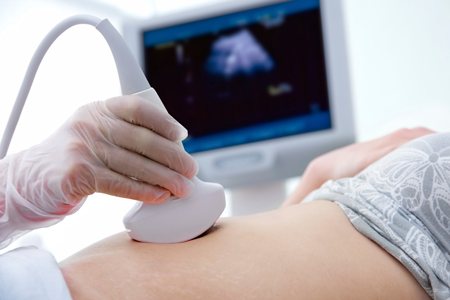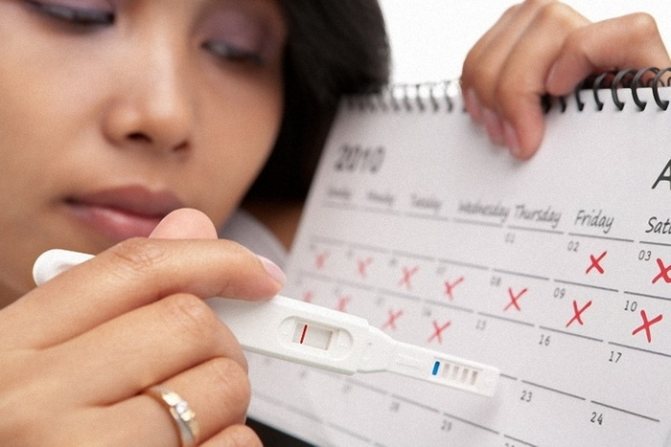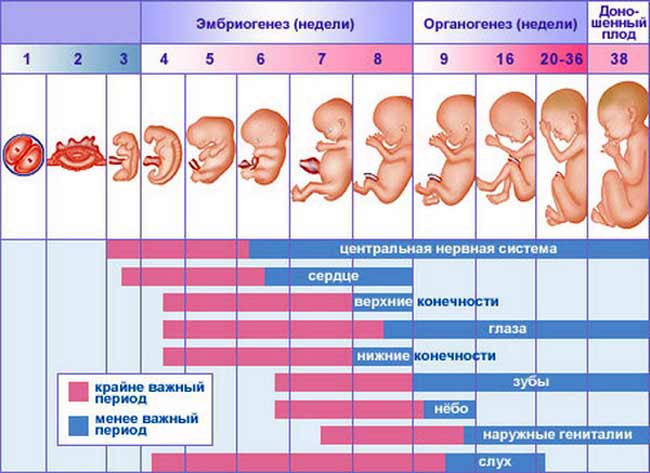How to calculate the due date?
Day X: how to calculate the due date
After pregnancy, every woman, of course, wants to know when labor will begin. How is the due date calculated?
childbirth, fetal ultrasound, ovulation
For an expectant mother, labor can begin at any time starting from the 38th week of pregnancy. Normally, this occurs from the 38th to the 42nd week. The expected date of birth (EDD) is the day when the pregnancy is exactly 40 weeks. Doctors focus on this period because most births begin at this time. There are five ways to calculate your expected due date.
Determining the gestational age by the date of the first movement
How is it calculated? It is believed that during the first pregnancy, a woman can feel fetal movements in the middle of pregnancy, around the 20th week. If the pregnancy is the second, the date of the first movement occurs a little earlier - at the 18th week. By remembering this day and adding 20 (or 22) weeks to it, a woman can calculate the day of birth.
How accurate? Some expectant mothers claim that they first felt their baby much earlier - at the 17th and even the 15th week of pregnancy. This may be a mistake (it is easy to mistake intestinal peristalsis for movements), but it may also be true. In addition, we must take into account that thin women with increased sensitivity recognize the baby’s movements before fat ones. Much depends on the place of attachment of the placenta - located on the front wall, it makes it difficult to feel the baby. The fetus itself can be active or inactive - this also affects the mother’s feelings. In short, an error of several weeks when determining the maximum permissible value in this way is not uncommon.
Even if you use all the methods to determine the expected date of birth, the expectant mother is not immune from surprises. Only 40% of children turn out to be punctual and are born at 40 weeks, and even less exactly on the expected day of birth. The baby may rush into the world, or it may linger in the mother’s tummy. Therefore, when your pregnancy is 38 weeks old, you need to be ready to go to the maternity hospital on any day of the next month.
Method number 1: by date of last menstruation
The gestational age calculated using this method is called the obstetric period. To determine the PDA, you need to add 280 days (the average duration of pregnancy) to the date of the last menstruation, and you will get the estimated date of birth. To make it easier to calculate, you can use Naegele's formula. From the first day of the last menstruation, you need to subtract 3 months and add 7 days. For example, if the last menstruation began on April 15, then: April 15 – 3 months + 7 days = January 21. The resulting date, January 21, will be the estimated due date.
The obstetrician-gynecologist calculates the expected date of birth at the first appointment based on the date of the last menstruation and the results of the examination. As new data becomes available - ultrasound, the first movement of the fetus - PDR is determined additionally. Next, all indicators are compared, the PDA is specified and recorded in the pregnant woman’s exchange card.
Irregular cycle and IVF
It is quite difficult to use a calculator and do your own calculations if a woman has such an irregular cycle that she simply does not remember when her last period began. Irregular cycles can vary. If they appear with different cycle lengths (either 28 or 32 days), this will not affect the calculations, since the date of the last menstruation is there, the rest can be calculated without problems.
If the date is unknown, then an ultrasound should be done in the early stages to determine the gestational age. Only up to the 10th week of pregnancy can it be determined with great accuracy. Before this period, the processes of embryogenesis occur, when the baby’s organs, tissues, and systems are formed, and the growth of different embryos at this period proceeds at approximately the same pace.

If the desired pregnancy occurs during an IVF treatment protocol, general calculators and calculation methods for pregnant women are also not suitable. For artificial insemination, a woman is induced to undergo drug-induced superovulation, and then several mature eggs are taken from several follicles at once using follicular puncture. Fertilization with the husband's or donor's sperm occurs in a laboratory setting. After a few days, the embryos are transferred to the patient's uterus.
14 and 21 days after this, the woman can visit an ultrasound specialist to confirm or deny the fact of pregnancy. In this case, nothing can be calculated from conception either, because the conception took place in the laboratory. It all depends on how large the embryos were transferred when they implanted.
There are special calculators that help calculate the date of birth and the current period for women after IVF. They need to indicate the date of embryo transfer, as well as the age of the embryos at the time of transfer (three days, four days, five days). As a result, they receive a calculation in which the gestational age is indicated in the obstetric period, and the PPD, like everyone else, occurs at the end of the 40th week of pregnancy.
Method number 2: by date of conception or by ovulation
The gestational age, which is calculated by the date of conception, is called embryonic, since the starting point is taken as the moment of conception, and not the date of the last menstruation, when on average there are still 2 weeks before conception. Most often, conception occurs on the day when ovulation occurs (the release of a mature egg from the ovary). In most cases, ovulation occurs in the middle of the menstrual cycle, that is, if the menstrual cycle is 28 days, then it occurs approximately on the 14th. If the cycle is 30 days, then it happens on the 15th day, but if it is 24 days, then on the 12th. It must also be remembered that pregnancy can occur from the 12th to the 16th day of the menstrual cycle, and not just in the middle. These are the so-called “dangerous days”. The essence of the method If a woman knows exactly the date of ovulation, which mainly happens if she does this specifically (measures her basal temperature regularly, uses ovulation tests, etc.), then the following calculation method can be used. You need to add 266 days to the date of ovulation - the resulting period will be the expected date of birth. If the calculations are made correctly, then the PDR calculated by the date of the last menstruation and the date of conception should coincide.
Determining the gestational age by the day of ovulation
How is it calculated? With a 28-day cycle, ovulation occurs exactly on the 14th day.
Now we add 38 weeks to this day - and you’re done: here it is, the expected day of birth! How accurate? For many women, the cycle has deviations in one direction or another. The interval between menstruation can be 25 days or 32–33. The day of ovulation in this case is determined as follows: it always occurs 14 days before the start of the next menstruation. But still these calculations are not very accurate. After all, a mature egg lives up to two days, and sperm can live inside the female body for five days after sexual intercourse. This method works best if the time interval between unprotected sexual intercourse was at least 6 weeks.

Method No. 3: by date of first appearance at the antenatal clinic
This method can be used if the expectant mother consults a doctor before 12 weeks of pregnancy. At the first appointment, the obstetrician-gynecologist performs a vaginal examination and determines how enlarged the uterus is. Based on the size of the uterus, the doctor approximately determines the duration of pregnancy. To the date at which the gestational age was determined at the first appointment, you need to add the missing number of weeks to get 40 weeks. The calculated day will be the expected date of birth. Using this method of calculation if the first appointment with a doctor was after 12 weeks is not very informative.
Determining the “age” of the fetus using ultrasound
The question of how long a pregnancy is is of concern not only to expectant parents. For doctors who are responsible for the health of a pregnant woman and her unborn baby, it is even more important. A specialist in an antenatal clinic needs this data to determine whether the fetus is developing correctly and whether the entire process of developing a new life is proceeding normally.
How is the gestational age determined? How accurately does this data reveal the birth of new life? One way to determine this can be the words of the woman herself. Every representative of the fair half knows how many days have passed since the last menstruation and almost always remembers exactly the first day of the last menstruation. It is from this day that the doctor begins to count the duration of her pregnancy. This is the so-called obstetric method of determination.

If a woman was planning to become a mother and measured basal temperature or folliculometry, then the data she received can be very helpful to the doctor.
If conception is suspected, the woman comes monthly for an appointment at the antenatal clinic, where the doctor examines the woman, and if the uterus is enlarged, it is assumed that pregnancy has occurred. The entire period of gestation for the expectant mother is determined by the period of her interesting position according to the height of the uterus (for this purpose, the volume of her abdomen is measured), the size of the pelvis is also important. But all these indicators are not considered one hundred percent accurate.
A more accurate method for determining the period of an interesting position is ultrasound examination. At twelve to fourteen weeks, all women preparing to become mothers are sent for an ultrasound. At this time, it is possible to see whether the fetus is developing correctly. When determining the period in the first three months, it is not always possible to see many important details; diagnosis in these cases is carried out strictly according to indications.
Until the tenth week, the period is determined by the size of the embryo . This is due to the fact that in the first months all embryos develop equally. During this period it is difficult to make a mistake; the error usually does not exceed several days. And in the second trimester, development becomes individual for each individual fetus.

If you go for ultrasound diagnostics immediately after fertilization, then even the most cutting-edge device will show absolutely nothing. You can contact a specialist no earlier than a week after the delay. First, the woman must be examined by a gynecologist. Only he can decide whether there is a need to undergo an ultrasound scan at such an early stage.
The fact is that transabdominal ultrasound examination at this stage will not give any results. In this case, the diagnostic procedure is carried out using a special sensor, which is inserted into the vagina. Only in this way is there a chance to examine the embryo.
At such early stages, transvaginal examination is carried out only in cases of urgent need, for example, there are serious suspicions that the fetus is not developing in the uterus. Also, diagnosis and determination of the fetal term in the early period using ultrasound are necessary during in vitro fertilization, when it is necessary to check whether it was successful.
It must be remembered that pregnancy can be easily interrupted in the first months, so such procedures should be approached with caution if you want to give birth to a child.
So when can you go for an ultrasound examination for a reason? When can the “age” of the fetus be accurately determined? How many times should a woman go for ultrasound diagnostics to determine her due date? If in the first week after fertilization it is still impossible to see anything for sure, then already in the third week you can determine pregnancy with one hundred percent accuracy.

Why is ultrasound diagnostics carried out at various periods to determine the lifespan of the embryo and fetal development:
- in the fifth to eighth week, an ultrasound confirms the presence of the embryo in the uterus and where it is attached. During this period, it is already possible to calculate his heart rate and visualize how he moves. Determine the thickness of the layer of the uterus that will subsequently become the placenta;
- in the tenth to twelfth week you can accurately determine the “age” of the fetus and whether it is developing correctly. At this stage, the due date is determined. The doctor assesses the width of the collar zone. At this time, most of the possible pathologies and developmental anomalies are already visible. If its indicators are within the normal range, this indicates normal development of the fetus in genetic terms;
- The twenty-second to twenty-fourth week is the best time to exclude malformations and calculate the day of birth. The volume of water around the unborn child, development and size of the fetus are also assessed.
If any abnormalities are suspected, the woman is referred for genetic consultation. If the unborn baby can be examined from all sides, the gender can be determined with one hundred percent accuracy;
- The thirtieth to thirty-second week is the most suitable period for assessing the activity of movements of the unborn child. During the study, you can see whether the baby is developing correctly and whether he is mobile. It is also determined whether the blood flow to the placenta and the main reproductive organ of the expectant mother is intense. If the baby is entwined with the umbilical cord or is positioned incorrectly in the uterus, the specialist may prescribe an additional ultrasound before the birth. At this time, they decide which type of delivery is most suitable in a particular case (the woman herself will give birth or the child will be born by caesarean section).
Method number 5: according to ultrasound data
When performing an ultrasound examination, the doctor determines what stage of pregnancy the size of the fetus corresponds to on the day of the examination. To calculate the expected date of birth, to the date at which the gestational age is established, it is necessary to add the number of weeks that does not reach 40 weeks. Calculation of PDR will be more accurate if the ultrasound was done before 12 weeks.
If a woman has an irregular menstrual cycle, then calculating the expected date of birth based on the date of the last menstruation and the date of conception will not be informative. In this case, calculations of the PDR based on ultrasound data, the time of the first fetal movement and the first examination will be more accurate.
Sochi.MD - obstetrician-gynecologist online
Hello! help me calculate the maximum allowance and the beginning of maternity leave. PDPM - August 9, 2015, ovulation - August 23. The cycle is regular. PDR according to online calculators - 05/15/2016. date of maternity leave - 03/06/2016. According to the ultrasound, other data: maternity leave – 05/21/2016, respectively, the start date of maternity leave – 03/12/2016. At the last appointment, the doctor said that the date for maternity leave was March 26, 2021. And the MDR is 27-28. 05.2016. Is this possible??? I don’t understand where these dates came from. And yet, on the basis of what data is the PDR established: according to PDPM or according to ultrasound primarily.
PDP and the beginning of maternity leave Hello! help me calculate the maximum allowance and the beginning of maternity leave. PDPM - August 9, 2015, ovulation - August 23. The cycle is regular. PDR according to online calculators - 05/15/2016. date of maternity leave - 03/06/2016. According to the ultrasound, other data: maternity leave – 05/21/2016, respectively, the start date of maternity leave – 03/12/2016. At the last appointment, the doctor said that the date for maternity leave was March 26, 2021. And the MDR is 27-28. 05.2016. Is this possible??? I don’t understand where these dates came from. And yet, on the basis of what data is the PDR established: according to PDPM or according to ultrasound primarily.
Hello Lyra. Unfortunately, I won’t calculate your deadlines and dates, as I don’t provide online services. What you need to know about this: 0. The maternity leave date will be as calculated by your doctor. The only person capable of issuing this rather expensive (as it is submitted to the accounting department) document is a sick leave certificate)) 00. There is no need to worry too much about this. Because prenatal and postnatal leave are considered cumulatively and the number of days of incapacity for work does not change. Once upon a time, this was different and it was fashionable to “persuade” a doctor to open a sick leave a couple of weeks earlier)))) now the financial component of this is lost; 1. The date of going on maternity leave is calculated in the same way as everything else related to the timing of pregnancy and childbirth - that is, based on the totality of all data and the attending physician; 2. If during pregnancy some data unexpectedly surprised you, most likely it is unreliable. Let me explain. If I was born in 73 and my age was established, it was clear ahead of time when I would go to school, reach adulthood, leave military age, and even retire. The situation is absolutely the same with the duration of pregnancy. During the first half of it, it is necessary to set the period (“gestational age”) and count further, until those weeks that are needed. At least until 30 weeks, at least until the PDR, at least until the date of inclusion in the electoral lists)))) I.I.
Will labor begin exactly on the calculated day?
The date of birth that is calculated is not the exact day of birth, but only the estimated one. It is highly likely that labor will begin on this day, but it can also happen a few days earlier or later. PDR is a guideline, so a pregnant woman should not be upset if she does not feel contractions on the appointed day. Since the calculation of the maximum allowance for each method is not absolutely accurate, it is recommended to compare the obtained dates. As a result, it is not a specific date that is determined, but a time interval in which labor is likely to begin: for example, the due date is from March 17 to March 22.
Expert: Galina Filippova, general practitioner, candidate of medical sciences Author: Irina Isaeva, obstetrician-gynecologist
The material uses photographs belonging to shutterstock.com
Late settlements
In the third trimester, fetal parameters in women are radically different. Some carry large children, whose weight at the time of birth is about 5 kg. Others can carry babies weighing less than 3 kg. None of these indicators are deviations. It happens that errors occur during obstetric calculations. There are cases when pregnancy occurred earlier.
The last period may have been quite scanty. In this case, a Doppler study is prescribed for clarification, which feels no different from ultrasound diagnostics. For your information, the latest ultrasound may cause an error in establishing the due date at 7 days. During this period, ultrasound is used to determine pathologies. The most optimal time is between 19 and 23 weeks of pregnancy.

A woman can independently calculate the approximate time frame
To obtain more accurate information, the gynecologist performs an accurate assessment of fetal parameters, the condition of the cervix, and Doppler examination. Based only on a complete diagnosis, checking the norm, the doctor can set one or another deadline and guess the time of the expected moment. In addition to constitutional features, errors may occur in the presence of certain pathologies of the mother or baby. For example, the presence of diabetes in a woman can not only interfere with normal growth, but also contribute to its acceleration.
Could there be difficulties?
Very often, pregnant women try to determine the estimated date of birth based on data from their last sexual intercourse. But even with all the desire, this technique is not highly accurate, for which there are several explanations:
- It very rarely happens that a woman has only one sexual intercourse during one menstrual cycle. And given an active sex life with a frequency of sexual intercourse of 2-4 per week, it is extremely difficult to determine the day of conception. And even if the date of ovulation was precisely determined, it is impossible to say with 100% certainty that sexual intercourse that coincides with this date will be decisive, since the lifespan of sperm, unlike an egg, is 3-5 days.
- This technique is only suitable for determining the real term, not the obstetric one, which is used by all fertility doctors. Simply put, those who try to determine the exact date of birth in this way do so out of idle interest.
How to prepare for childbirth?
To tune in to a successful birth means to transfer all your experiences from the area of “I-experiences” to the area of “we-experiences”. Namely:
- understand what is happening to your baby at each specific moment of childbirth, think first of all about him, help him mentally (if you know prayers, pray for the Baby);
- maintain contact with him, talk, talk about your feelings, calm him down, encourage him until the moment when he is placed on your chest;
- concentrate mentally on the situation when childbirth is already behind you and you can enjoy contemplating your baby in a calm atmosphere. This image needs to be rotated in your head constantly, more and more associating it with positive emotions (the less time remains before the birth of the Baby, the more actively you should imagine this image);
- firmly believe that you will have a healthy Baby with two arms and legs, eyes and ears, one mouth and nose, hearing, seeing, with five fingers on each limb. Did you smile? But many mothers are afraid that the Baby will not live up to their expectations in appearance! Remember how happy the parents were from Ray Bradbury's story when they first saw their... baby pyramid. Your fear that you won’t like the baby will lead to the Baby’s counter-fear of not liking you. And it is quite possible that all his life he (smart, talented, handsome), without realizing the reasons, will be afraid that others will not like him, and will spend his energy fighting for their recognition. No matter how your Baby appears outwardly, you must assure him that you need him as he is, long before birth. And this is one of his most important expectations.
Readiness for childbirth
The 40th week of pregnancy is the final stage of bearing a child, and the expectant mother’s body is almost ready for the upcoming birth. Now you should have everything ready for the birth of your baby - from a bag to the hospital and documents, to complete order in the apartment and the presence of everything necessary to care for your baby. Fear of childbirth, increasing stress, anxiety - all this negatively affects your baby. Try to set yourself up positively, because very soon you will be able to see and hold your long-awaited son or daughter in your arms!











